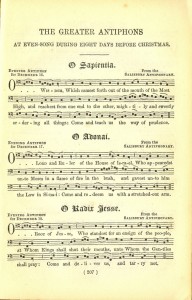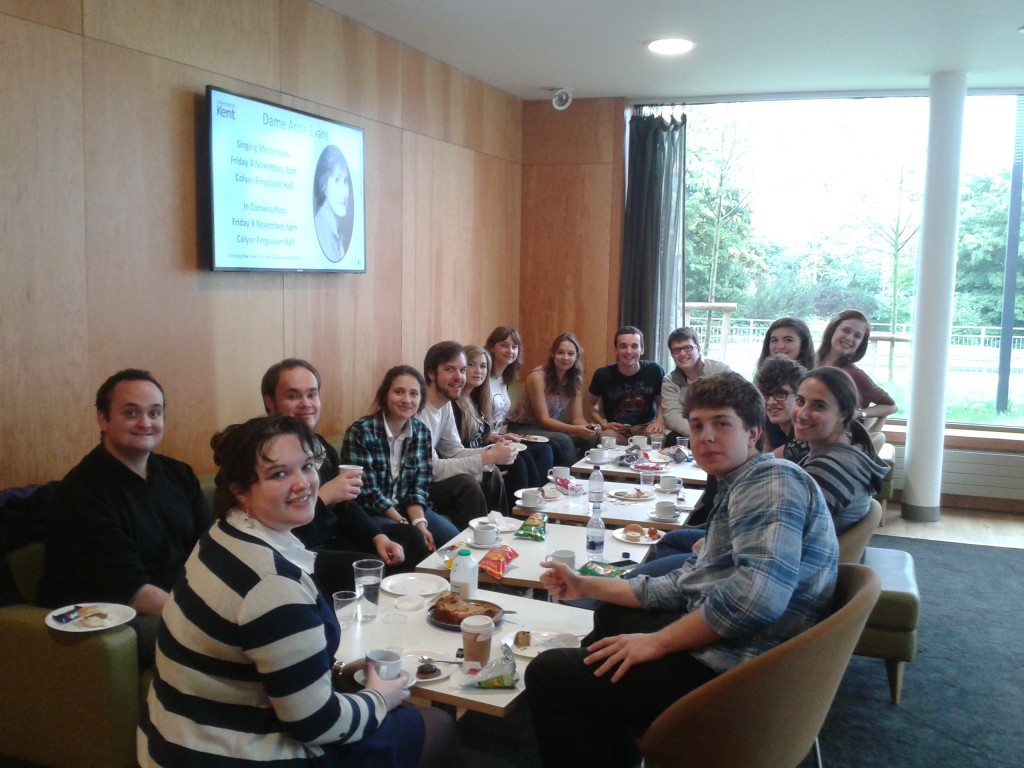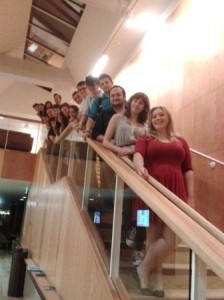Since writing about the weekend rehearsal, I was talking to a couple of members of the Choir on Monday about how they felt the day had gone.
”Well,” said one of them, ”we kind of felt that, um…that we could do with a piece that’s more…umm…cheerful ?”
And do you know, she was right. Re-considering the programme for March, it did seem that we could do with something more jolly and lively in the second half. The two singers were recalling fondly some of the jollier repertoire we’d done in the past – a vilanelle by Lassus, last year’s madrigal Tanzen und Springen by Hassler – and, with these in mind, I spent Monday afternoon looking for a similar piece. It’s all about learning – they learn from me, I learn from them – and feedback is so crucial, for me, to my role in leading the Chamber Choir each year; to get a sense of how the Choir feels about rehearsals, about repertoire. We’re a democratic ensemble, making decisions together, contributing suggestions and ideas – it makes us function better as a team than as an autocracy, and the resulting performance is always better, too.
And then it struck me. Of course! What about Lassus’ bonkers chickens-squabbling Chi Chi Li Chi ? There was nothing in Italian amongst this year’s pieces, and we could make something almost theatrical out of it, the argumentative roosters sniping at each other in the yard. We could relinquish the Barber Agnus Dei – a great piece, certainly, but perhaps too much for this particular programme.

All in a flap…Credit: Wikimedia Commons
With this in mind, last night’s rehearsal took a somewhat different course to the one I’d originally planned; Matt opened proceedings in continuing Rutter’s Dashing Away – another two verses under the belt – and then we embarked on the Italian Rooster-Fight. There were some raised eyebrows at first, but we worked on the rhythm of the text and the pronunciation, and then added the notes. (I’ve suggested that, to help them develop their pronunciation, that they all watch the new series of Inspector Montalbano on BBC4 on Saturday nights, for Luca Zingaretti’s style).
It’s certainly a bit different to the Barber! But I think we can really exploit the dramatic, theatrical nature of the waspish exchanges between the birds. A quick look at the first two verses of the second of the Brahms lieder, and a revisiting of Sing We At Pleasure by Matt, and the first half was over.
 And so to Advent. It’s not Christmas for singers if you don’t start looking at the seasonal repertoire much earlier than December; those Carols for Choirs are cracked open weeks in advance (as Dave in the basses has written about, in poetic form, here). We took our first steps towards the Advent concert with two of the wonderful Advent antiphons, which we are reading from proper plainchant notation – as I said to the Choir, one of the great things about music at Christmas is that it looks forward (there’s usually lots of contemporary carols being commissioned for Christmas) as well as back to the past, and you can really feel the touch of history in the antiphons – they are referred to by the Christian philosopher Boethius (who died in 524 or 525), and had certainly become established by the eighth century. There’s work to do in getting used to the ebb and flow, the wonderful flexibility of the way the phrases rise and fall, to give them a sense of freedom and elasticity rather than a note-after-note-after-note delivery – but it anchors the Advent programme in its history.
And so to Advent. It’s not Christmas for singers if you don’t start looking at the seasonal repertoire much earlier than December; those Carols for Choirs are cracked open weeks in advance (as Dave in the basses has written about, in poetic form, here). We took our first steps towards the Advent concert with two of the wonderful Advent antiphons, which we are reading from proper plainchant notation – as I said to the Choir, one of the great things about music at Christmas is that it looks forward (there’s usually lots of contemporary carols being commissioned for Christmas) as well as back to the past, and you can really feel the touch of history in the antiphons – they are referred to by the Christian philosopher Boethius (who died in 524 or 525), and had certainly become established by the eighth century. There’s work to do in getting used to the ebb and flow, the wonderful flexibility of the way the phrases rise and fall, to give them a sense of freedom and elasticity rather than a note-after-note-after-note delivery – but it anchors the Advent programme in its history.
The pieces will be coming thick and fast in rehearsals now; we also sang through Ord’s Adam Lay YBounden, the first two verses of Warlock’s Bethlehem Down (possibly my favourite carol), and finished with the Ukranian carol, Carol of the Bells, which leapt off the page so quickly that we had fun arranging ourselves around the balcony of the concert-hall to sing it. (Ignore the crass video here and just enjoy the music…)
Christmas – for the Chamber Choir – is on its way…



